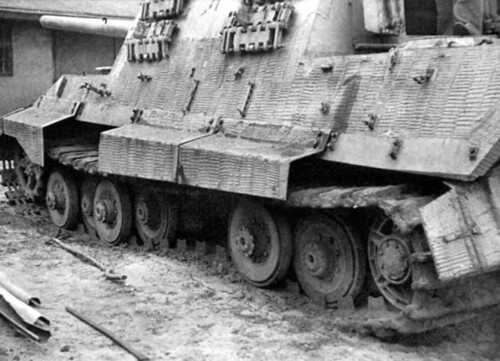According to page 179 of Jagdtiger, The most Powerful Armored Fighting Vehicle of WWII, Vol II., the last two Porsche suspension Jagdtigers, 305011 and 305012, did not have Zimmerit. The first two built, 305001 (Porsche) and 305002 (Henschel) also didn't have Zimmerit, all of the other (8) Porsche suspension Jagdtigers had Zimmerit, including it being applied to the fenders as well, as seen here, (current Bovington vehicle, Fgstnr. 305004);

On many photos it is difficult to discern whether Zimmerit is present or not, due to the poor resolution of the photo. Since there are 3 Porsche Jagdtigers without Zimmerit, one really needs to be able to identify which chassis number a vehicle actually is before determining how to model the features that would be present. There are variations seen during production of these 11 vehicles, as noted here;
http://www.network54.com/Forum/47207/message/1020920018
The majority of Jagdtiger photos show them missing the fenders completely. I don't know of a photo showing a Porsche suspension vehicle with Zimmerit on the hull, but without Zimmerit on the fenders. There are variations of the Zimmerit application noted, but here again, poor quality photos can make this discernment difficult.
As far as scale thickness is concerned, the actual thickness of the fenders is 5mm, (not including the thickness of the Zimmerit), which works out to 19 thousandths of an inch in 1/35. Two layers of 4 thousandths PE would be 8, plus the thickness of glue and paint, would be close to scale thickness once you factor in the thickness of the Zimmerit. Real Zimmerit was applied in two layers. The first layer was 5mm thick and the second layer was 3mm thick. The resulting final thickness would depend on which method was used to score, tool, or stamp the pattern into the second layer. Sorry, but I haven't completed all the math because I don't have any figures for the thicknesses of model glue, primer and paint, plus the variability of the Zimmerit thickness itself...